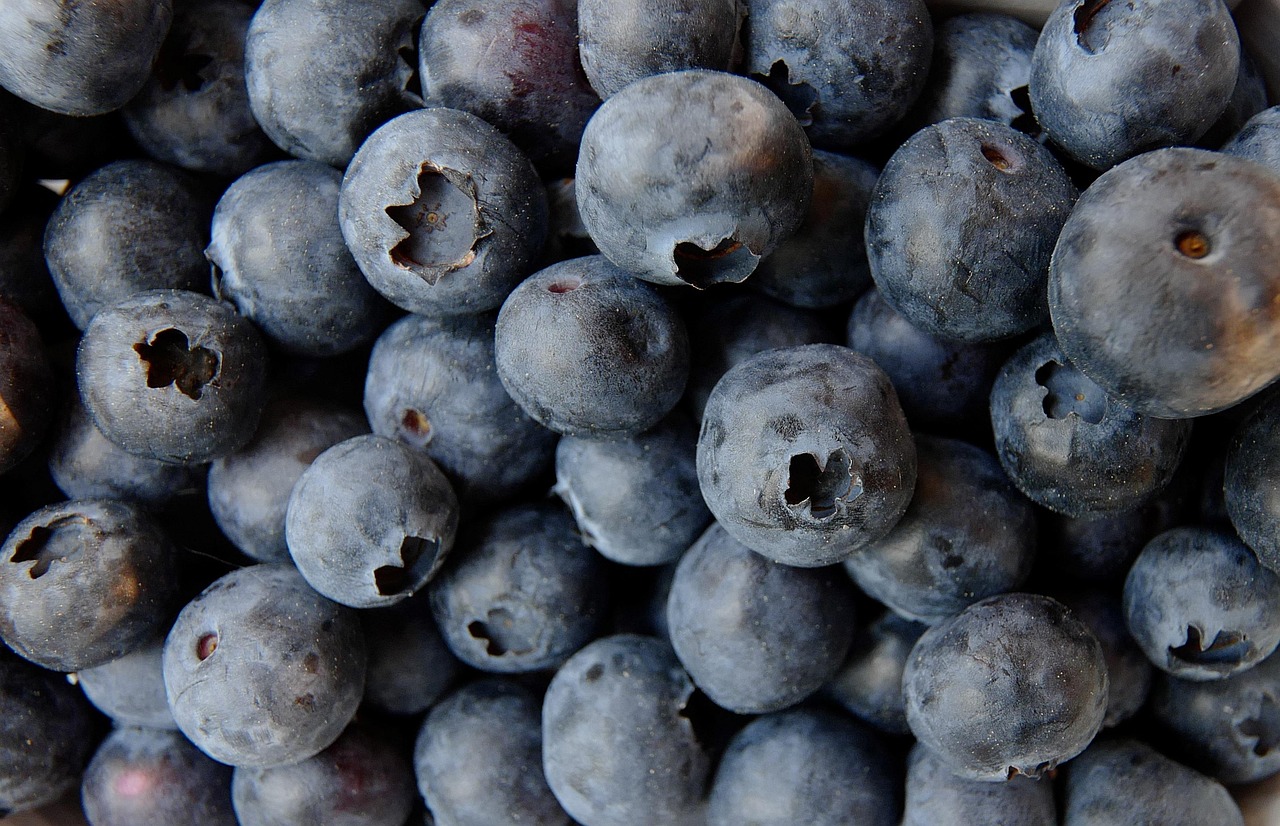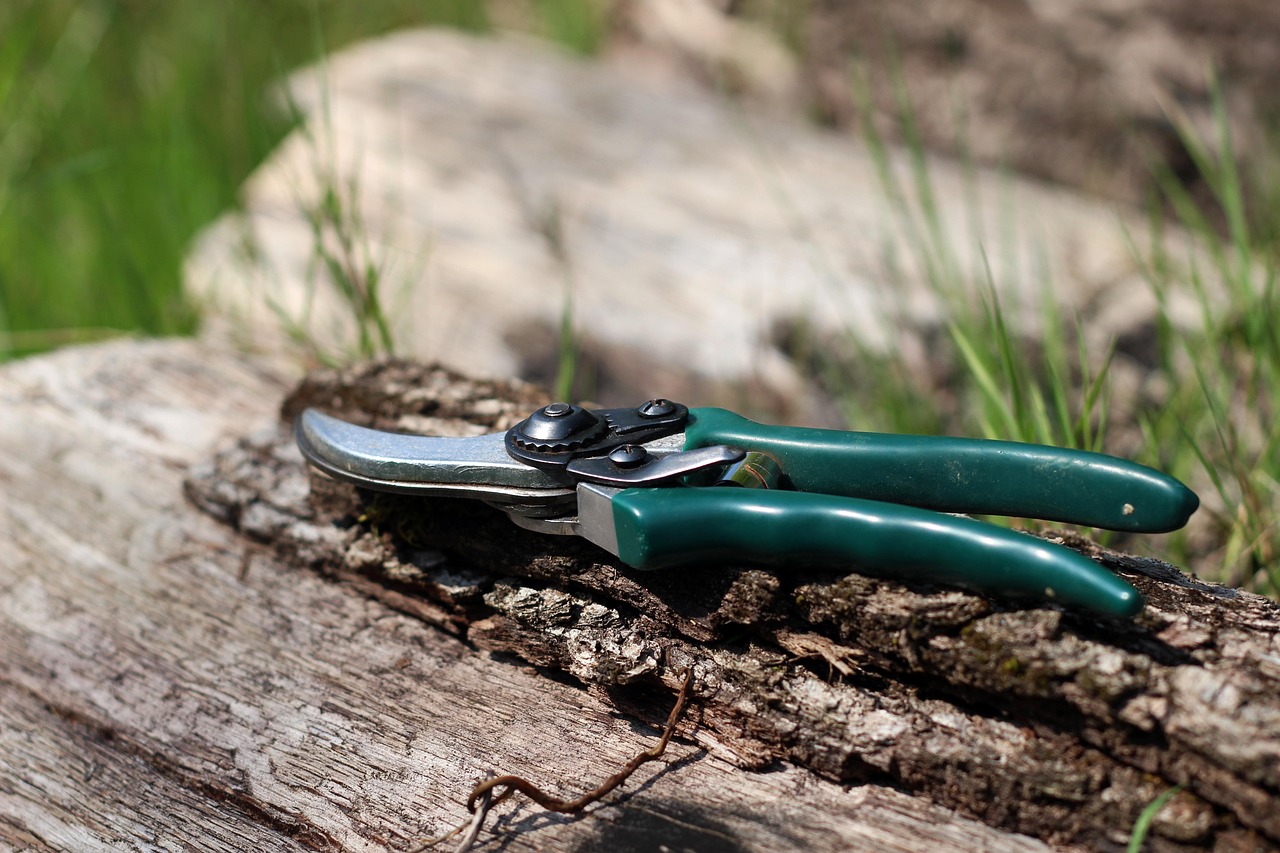To achieve maximum berry yield from blueberry trees, proper pruning is essential. The steps include assessing tree health, removing dead or weak branches, thinning out crowded areas, and shaping the tree to promote sunlight exposure and airflow.
Blueberries are a popular fruit known for their delicious taste and numerous health benefits. These small berries are packed with antioxidants, vitamins, and minerals. Growing blueberries can be highly rewarding, but it requires proper care and maintenance to ensure a bountiful harvest. One of the most critical aspects of blueberry cultivation is pruning. Pruning helps maintain the health of the plants and maximizes berry yield.

Blueberries thrive when they are pruned correctly. When done at the right time and in the right way, pruning encourages new growth and improves fruit production. The process can seem daunting to novice gardeners, but understanding the steps involved makes it manageable. It is important to know when to prune blueberry trees, as the timing can significantly affect fruit yield.
| Pruning Step | Purpose | Best Time to Prune |
|---|---|---|
| Assess Tree Health | Identify weak or diseased branches | Late winter to early spring |
| Remove Dead Branches | Promote better airflow | Late winter |
| Thin Crowded Areas | Enhance sunlight exposure | Late winter to early spring |
| Shape the Tree | Encourage healthy growth | Late winter |
Understanding Blueberry Growth
Before diving into pruning steps, it’s essential to understand how blueberries grow. Blueberry bushes can be categorized into highbush, lowbush, and rabbiteye varieties. Highbush blueberries are the most commonly grown type and can reach heights of up to six feet. Lowbush blueberries are smaller and typically found in wild settings. Rabbiteye blueberries thrive in warmer climates.
The growth habit of blueberry bushes is naturally upright with a dense canopy. Over time, these bushes can become overcrowded if not pruned properly. This overcrowding can lead to decreased fruit production because the inner branches may not receive enough sunlight. Furthermore, poor airflow can increase the risk of diseases, which may affect overall yield.

During the initial years of growth, it is crucial to focus on shaping the plant rather than maximizing fruit production. Allowing the blueberry bush to establish its structure will lead to healthier plants in the long run. Young plants should not be harvested heavily until they are about three years old. This time allows them to build a robust root system.
Basic Pruning Techniques
When pruning blueberry trees, there are several techniques that gardeners should keep in mind. Each method has its purpose and can significantly influence the health and productivity of the plants.
1. Heading Back
This technique involves cutting back the tips of the branches to encourage bushier growth. Heading back helps stimulate new shoots that will produce fruit in subsequent years. It is particularly effective for young bushes that need to develop a sturdy framework.

2. Thinning Out
This method involves removing entire branches from the base of the plant. Thinning out is essential for improving airflow and light penetration within the canopy. It is advised to remove older branches that are more than three years old, as they tend to produce fewer fruits.
3. Renewal Pruning
Renewal pruning focuses on replacing older wood with newer growth. By allowing younger shoots to take over, gardeners can ensure a continuous supply of healthy fruiting wood. It is advisable to leave a balance of old and new wood for optimal production.
Timing Your Pruning Efforts
The timing of your pruning efforts is just as important as the techniques used. The best time to prune blueberry trees is during late winter or early spring before new growth begins. This time frame allows you to assess the health of the trees while minimizing stress on them.

Pruning during dormancy helps prevent sap loss and reduces the risk of disease transmission. After pruning, it is vital to monitor the bushes closely for any signs of stress or disease, ensuring that they remain healthy as they begin their growing season.
In summary, understanding blueberry tree growth and employing effective pruning techniques at the right time can significantly enhance berry yield. With proper care and attention, blueberry bushes can become highly productive assets in any garden or orchard.
Essential Tools for Pruning Blueberry Trees
To effectively prune blueberry trees, having the right tools is crucial. Using appropriate tools not only makes the job easier but also ensures clean cuts that promote healthy growth. Below are some essential tools that every blueberry grower should have on hand.
- Pruning Shears: These are ideal for cutting small branches and stems. Look for sharp, high-quality shears that provide a clean cut.
- Loppers: For thicker branches that are too large for pruning shears, loppers offer extra leverage and cutting power.
- Saw: A small hand saw can be useful for cutting larger branches that need to be removed during the pruning process.
- Gloves: Protect your hands while handling thorny branches or debris.
- Safety Glasses: Wearing safety glasses can prevent injury from flying debris when cutting branches.
Having these tools ready will make the pruning process smoother and more efficient. It is also essential to keep your tools clean and sharp. Dirty or dull tools can introduce disease to the plants and cause unnecessary stress during the pruning process.
Understanding Blueberry Varieties and Their Pruning Needs
Different varieties of blueberries have unique growth habits and pruning requirements. Understanding these differences is important for maximizing berry yield. Here are some common varieties and their specific needs:
| Variety | Growth Habit | Pruning Focus |
|---|---|---|
| Highbush | Tall and upright | Focus on thinning older canes |
| Lowbush | Short and spreading | Minimal pruning; focus on maintaining health |
| Rabbiteye | Tall with wide spacing | Encourage new growth; prune older canes |
Highbush blueberries require more intensive pruning compared to lowbush varieties. This is because highbush plants tend to develop thick canopies that need to be opened up for light penetration and air circulation. On the other hand, lowbush blueberries benefit from minimal intervention, allowing their natural growth patterns to flourish.
The Science of Pruning Cuts
The type of cut made during pruning can significantly impact the health of the blueberry trees. Different cuts serve different purposes and have various effects on plant growth.
1. Clean Cuts
Always aim for clean cuts when pruning. This involves cutting at a slight angle, which helps water runoff and reduces the risk of rot. A clean cut also promotes quicker healing.
2. Flush Cuts
A flush cut occurs when a branch is cut flush to the main trunk or limb. While this is sometimes necessary, it can leave the plant vulnerable to disease if not done correctly. Avoid making flush cuts whenever possible to preserve the integrity of the bark.
3. Topping Cuts
Topping refers to cutting off the top of a branch, which can stimulate new growth below. However, this technique should be used sparingly, as it can lead to weak growth if overdone.
Post-Pruning Care for Blueberry Trees
After completing the pruning process, it is essential to provide proper care for your blueberry trees. This care will help them recover from pruning stress and prepare for a fruitful season ahead.
- Watering: Ensure that your plants receive adequate water after pruning. This helps reduce stress and encourages new growth.
- Fertilization: Applying a balanced fertilizer can provide essential nutrients to support healthy growth. Use fertilizers specifically formulated for acid-loving plants, as blueberries thrive in acidic soil.
- Pest Monitoring: Keep an eye out for any signs of pests or diseases following pruning. Early detection can prevent larger issues down the road.
- Mulching: Adding a layer of organic mulch around the base of the plants helps retain moisture, suppress weeds, and regulate soil temperature.
Caring for blueberry trees after pruning plays an important role in ensuring they bounce back strong and healthy. Taking these steps can set the stage for a productive growing season, ultimately leading to a higher yield of delicious blueberries.
Common Mistakes to Avoid When Pruning Blueberry Trees
Pruning blueberry trees can be a straightforward task, but mistakes can lead to reduced yields or even damage to the plants. Understanding common pitfalls can help gardeners ensure that their pruning efforts are effective. Here are several mistakes to avoid:
- Pruning at the Wrong Time: Timing is critical for effective pruning. Pruning too early or too late in the season can disrupt the plant’s growth cycle.
- Over-Pruning: Removing too many branches can weaken the plant. It is essential to strike a balance between removing old growth and maintaining enough healthy branches for fruit production.
- Ignoring Tree Health: Failing to assess the overall health of the plant before pruning can lead to cutting back diseased or weak branches that still contribute to yield.
- Using Dull Tools: Pruning with dull tools can crush branches instead of making clean cuts, leading to injury and increased risk of disease.
- Neglecting Cleanliness: Not sterilizing tools between cuts can spread diseases that may harm the plant.
Avoiding these common mistakes will help ensure that your blueberry trees remain healthy and productive. Paying attention to detail during the pruning process is vital for achieving optimal results.
Signs Your Blueberry Trees Need Pruning
Understanding when to prune blueberry trees is crucial for maintaining their health and productivity. Certain signs indicate that it is time to take action. Here are common indicators that your blueberry trees may need pruning:
- Excessive Crowding: If branches are densely packed, it’s a sign that thinning is necessary to allow sunlight and air circulation.
- Dead or Dying Branches: Any branches that show signs of dead wood or disease should be removed promptly to prevent further issues.
- Poor Fruit Production: If your blueberry yield has declined significantly, it may be due to overcrowding or aged wood that needs renewal.
- Weak Growth: If new growth appears spindly or weak, it may indicate that the plant needs rejuvenation through selective pruning.
Recognizing these signs will help you maintain the health of your blueberry trees, ultimately leading to better berry yields.
The Role of Soil Quality in Blueberry Production
The quality of soil plays a significant role in the overall health and productivity of blueberry trees. Blueberries thrive best in acidic soils with a pH between 4.5 and 5.5. Here are some important factors regarding soil quality:
- Soil pH: Regularly test your soil pH to ensure it remains within the ideal range for blueberries. Amend the soil with sulfur or peat moss if it is too alkaline.
- Nutrient Levels: Conduct soil tests to understand nutrient levels. Blueberries require balanced nutrition, especially nitrogen, phosphorus, and potassium.
- Drainage: Ensure your soil has good drainage. Blueberries do not tolerate standing water, which can lead to root rot.
- Organic Matter: Incorporating organic matter such as compost or well-rotted manure improves soil structure and provides essential nutrients.
Caring for the soil is as important as pruning when it comes to maximizing blueberry yields. Healthy soil promotes robust root systems and contributes to overall plant vitality.
Pest and Disease Management for Blueberry Trees
Pest and disease management are crucial components of blueberry tree care. Various pests can affect blueberry bushes, as well as diseases that can hinder growth and fruit production. Here are some common pests and diseases, along with management strategies:
| Pest/Disease | Description | Management Strategies |
|---|---|---|
| Blueberry Fruit Fly | A pest that lays eggs in the fruit, causing them to rot. | Use traps, remove infected fruit, and apply insecticides if necessary. |
| Powdery Mildew | A fungal disease that appears as a white coating on leaves. | Increase airflow through pruning, use fungicidal sprays as needed. |
| Spider Mites | Tiny pests that suck sap from leaves, causing yellowing. | Insecticidal soap or neem oil can be effective controls. |
| Crown Gall | A bacterial disease that causes galls on roots and stems. | Remove affected plants and practice crop rotation. |
Regular monitoring for pests and diseases is essential. Early detection allows for timely intervention, which can save your blueberry crop from significant damage.
The Benefits of Mulching Around Blueberry Trees
Mulching is an excellent practice for blueberry trees that offers numerous benefits. When applied properly, mulch can significantly enhance plant health and productivity. Here are some key advantages of mulching:
- Moisture Retention: Mulch helps retain soil moisture, reducing the frequency of watering needed.
- Weed Suppression: A layer of mulch inhibits weed growth, minimizing competition for nutrients and water.
- Temperature Regulation: Mulch helps keep soil temperatures stable, protecting roots from extreme heat or cold.
- Nutrient Release: Organic mulch breaks down over time, adding nutrients back into the soil as it decomposes.
Selecting the right type of mulch is important for blueberries. Pine bark or wood chips are excellent choices due to their acidity, which aligns well with blueberries’ preferences. Regularly replenish mulch throughout the growing season to maintain its effectiveness.
Advanced Pruning Techniques for Experienced Growers
For those who have mastered the basic pruning techniques, exploring advanced methods can further enhance blueberry production. These techniques can help maximize yield, improve fruit quality, and maintain tree health over the long term.
1. Renovation Pruning
Renovation pruning is a technique used primarily on older blueberry bushes that have become unproductive. This method involves significantly cutting back the bush to rejuvenate it. The process typically includes:
- Removing all but the strongest, healthiest canes, ideally leaving about 4-6 well-spaced canes.
- Cutting back these canes to about one-third of their height to stimulate new growth.
- Conducting this process during late winter or early spring when the plants are still dormant.
While renovation pruning may seem drastic, it can breathe new life into aging plants, leading to increased berry production in subsequent years.
2. Training Techniques
Training blueberry bushes involves shaping their growth to encourage better structure and fruiting potential. Utilizing training techniques can lead to more consistent yields over time. Common methods include:
- Cordon Training: This method involves training branches along a horizontal wire or support structure. It helps manage plant height and encourages fruiting along the length of the branch.
- Vertical Training: This technique encourages upward growth, allowing for more light penetration and better air circulation. It is particularly useful for highbush varieties.
Implementing these training techniques requires an understanding of plant growth patterns, but they can significantly enhance fruit quality and simplify maintenance.
Environmental Factors Affecting Blueberry Growth
In addition to pruning techniques, several environmental factors play a crucial role in the health and productivity of blueberry trees. Understanding these factors can help you create the ideal growing conditions for your plants.
1. Sunlight Exposure
Blueberries thrive in full sunlight, requiring at least 6-8 hours of direct sunlight each day. Insufficient sunlight can lead to weak plants and poor fruit production. When planting blueberries, consider their location carefully to ensure maximum exposure to sunlight.
2. Soil Moisture Levels
Blueberries prefer consistently moist but well-drained soil. Overwatering or poorly drained soil can lead to root rot, while underwatering can stress the plants and diminish fruit yield. Regularly check soil moisture levels and adjust your watering schedule accordingly.
3. Temperature Variability
Blueberry plants are sensitive to temperature fluctuations. Extremely hot or cold temperatures can negatively impact growth and fruit set. Mulching, as mentioned previously, can help regulate soil temperatures and protect roots from extreme conditions.
Nutrient Management for Optimal Blueberry Production
Nutrient management is essential for maintaining healthy blueberry plants. Providing the right balance of nutrients can enhance growth and yield. Here are key nutrients to focus on:
- Nitrogen: Essential for leafy growth; apply nitrogen-rich fertilizers in early spring as new growth begins.
- Phosphorus: Crucial for root development and flower formation; use a balanced fertilizer that contains phosphorus.
- Potassium: Helps with fruit quality and hardiness; ensure that potassium levels are adequate throughout the growing season.
Regular soil testing is recommended to monitor nutrient levels, allowing for timely amendments as needed. This proactive approach will ensure that your blueberry plants receive the necessary nutrients for optimal growth.
Final Thoughts
Pruning blueberry trees is a multifaceted process that combines knowledge of plant growth, timing, and technique. By understanding the importance of proper pruning, soil management, pest control, and environmental factors, gardeners can significantly enhance berry yield and quality. The steps outlined in this guide provide a comprehensive approach to nurturing blueberry bushes effectively.
Whether you are a novice gardener or an experienced grower, implementing these practices will support healthy blueberry production for years to come. Remember that patience and observation are key; every season presents new opportunities for improvement in your gardening practices. With dedication and care, your blueberry trees can flourish, providing you with delicious berries and satisfaction from your hard work.
